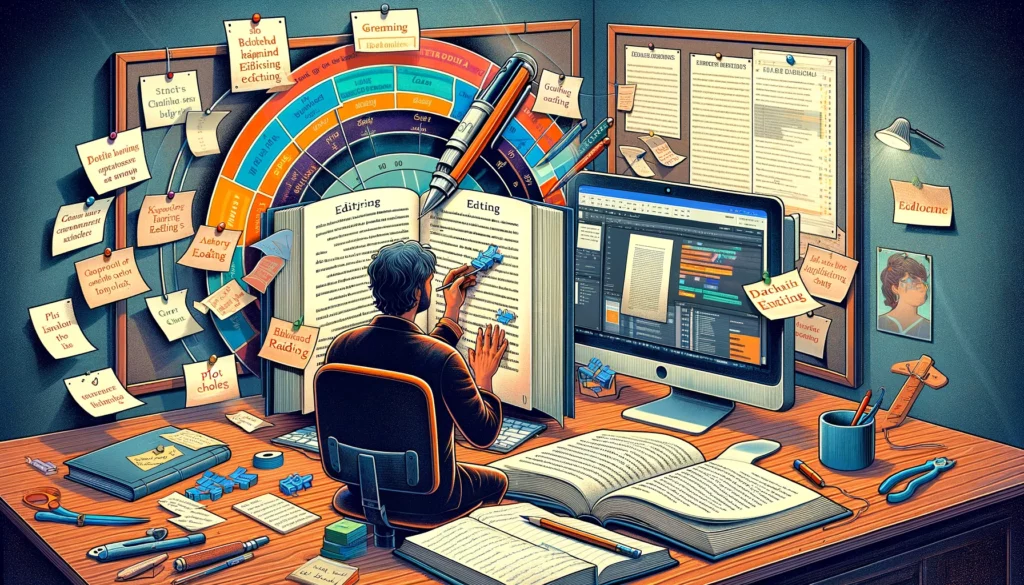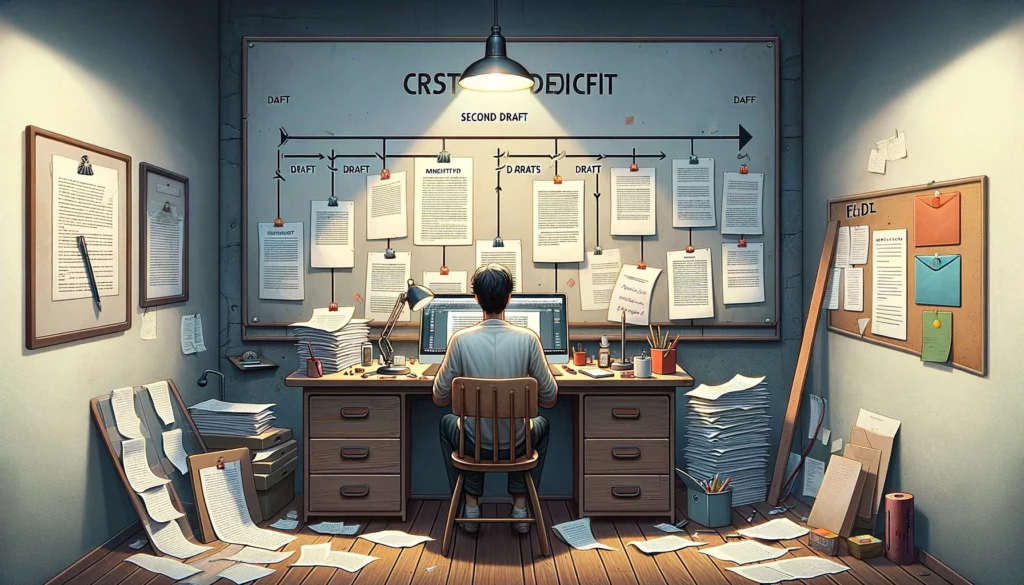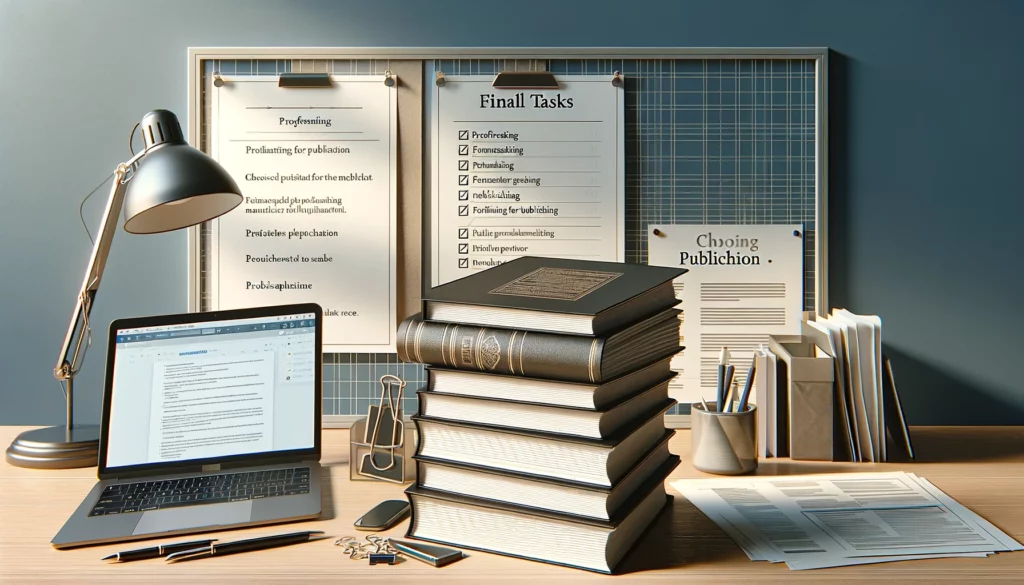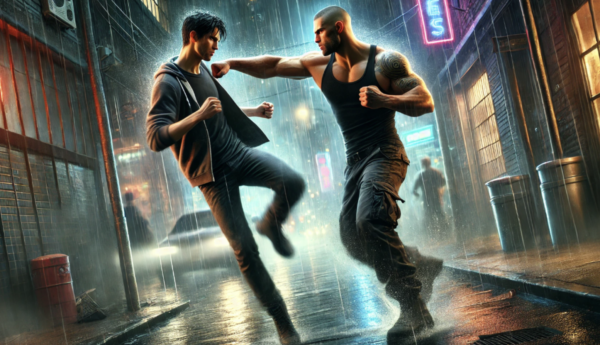
Editing is an integral part of the writing process, often regarded as crucial as the act of writing itself. It’s the stage where a manuscript transforms from a raw expression of ideas into a polished piece of literature. While the initial drafts are about pouring your creativity onto the page, editing is about refining that creativity, ensuring that your message is clear, compelling, and accessible to your readers.
Editing your book can be daunting, especially for first-time authors, as it requires a different set of skills compared to writing. It involves several layers, each with its own focus and techniques. Initially, self-editing allows authors to revisit their work, identifying and rectifying obvious errors in plot, character development, and structure. This is often followed by feedback from beta readers, who provide a fresh, unbiased perspective on the overall story and its impact.
Professional editing encompasses several stages, including developmental editing, which addresses big-picture issues like story structure and character arcs; line editing, which hones in on your use of language and sentence structure; and copy editing, focusing on grammatical accuracy, consistency, and style. Each stage is a step towards enhancing the clarity, flow, and engagement of your book, ultimately ensuring that your final manuscript is not just well-written, but also well-received.
Understanding How to Edit Your Book
The editing process is a multi-faceted journey that takes a manuscript from its raw, initial form to a polished final product, ready for readers’ eyes. It starts with self-editing, an introspective phase where authors review their own work, identifying areas for improvement in plot consistency, character development, and overall narrative flow. This stage demands a critical self-appraisal and often requires the writer to distance themselves from their work to gain an objective perspective.
Professional editing, on the other hand, introduces an external expert’s viewpoint. An editor brings specialized skills in identifying and resolving not just grammatical and stylistic inconsistencies, but also deeper issues like pacing, tone, and narrative structure. Their expertise extends beyond the words on the page, offering insights into market trends and reader expectations. The blend of self-editing and professional editing ensures a comprehensive refinement of the manuscript, enhancing its readability, coherence, and overall appeal to its intended audience.
Your Publishing Journey Awaits – Start Now
Preparing Your Manuscript for Editing
Before diving into the editing process, it’s crucial to complete your entire manuscript. Editing a work-in-progress can lead to a never-ending cycle of revisions, as new changes can ripple through the entire narrative. A completed draft provides a full view of the story, allowing for more coherent and effective editing.
To prepare your manuscript for editing, begin by organizing it systematically. Create a clear structure with well-defined chapters or sections. Use consistent formatting throughout to avoid confusion during the editing process. This includes standardizing headings, fonts, and spacing.
Next, take a step back and let your manuscript rest. Distance allows you to return with fresh eyes, making it easier to spot inconsistencies and areas needing improvement. Finally, consider creating a brief summary or outline of your manuscript. This will serve as a roadmap, helping you keep track of the narrative flow and major plot points, ensuring a more focused and efficient process.

Step 1: Self-Editing Your Book
Self-editing is the initial and a very personal phase in refining your manuscript. It requires you to switch from a creator’s mindset to a critic’s perspective. The key to effective self-editing lies in systematic approaches and a keen eye for detail.
Approaches to Self-Editing:
- Read Aloud: A good self-edit starts by reading your work aloud. You can catch awkward phrasings and unnatural dialogue that you might miss when reading silently.
- Backward Reading: For spotting spelling and grammatical errors, read your manuscript backward, from the last sentence to the first. This technique breaks the flow of reading, allowing you to focus on individual sentences and words.
- Chapter-by-Chapter Review: Tackle your manuscript one chapter at a time. This helps in managing the workload and maintaining focus.
- Using Editing Tools: Utilize software tools that can help identify obvious grammatical mistakes and suggest improvements.
Identifying and Fixing Common Issues:
- Plot Holes: Revisit your plot outline to ensure consistency. Look for any gaps in the storyline or unresolved subplots. Make notes of where clarifications or additions are needed.
- Character Development: Ensure each character has a clear arc and motivation. Check for consistency in behavior and dialogue. Minor characters should also have defined roles that contribute to the story.
- Grammatical Errors: Pay attention to grammar, punctuation, and sentence structure. Common issues include run-on sentences, improper comma use, and tense inconsistencies.
During self-editing, it’s crucial to maintain a balance between preserving your original voice and making necessary changes. Remember, self-editing is about making your manuscript the best version of your initial vision. Take breaks between editing sessions to return with a fresh perspective, ensuring that your final product is cohesive, engaging, and error-free.
Your Publishing Journey Awaits – Start NowStep 2: Inviting Beta Readers – Gaining External Perspectives
After self-editing, the next crucial step is to introduce beta readers to your manuscript. A beta reader plays a pivotal role by providing an external perspective. They offer insights into how an audience might receive your story, highlighting areas that resonate well and those that might need further development.
Choosing the right beta reader is key. Ideally, they should be part of your target audience, and able to provide relevant and constructive feedback. It’s also beneficial to select a diverse group, including both avid readers and those who can offer technical expertise, such as in grammar or subject-specific knowledge. In other words, simply passing your book to a family member may not always be the best idea unless they meet the criteria above.
When working with beta readers, clear communication is essential. Provide them with specific questions or areas of focus to guide their reading. This might include queries about character development, plot pacing, or clarity of narrative. Be open to their feedback, but also remember that not all advice will align with your vision for the book. It’s your responsibility to sift through the feedback and decide what changes are necessary to enhance your manuscript.
Finally, express gratitude for their contributions. Beta readers offer their time and insights to help improve your work, a crucial step towards creating a polished and engaging manuscript. Their feedback is an invaluable part of the editing process, bringing you closer to a final draft that resonates with your intended audience.

Step 3: Developmental Editing – Refining the Story Structure
Developmental editing is a deep, comprehensive form of editing that focuses on the fundamental aspects of a manuscript, such as its structure, plot, characters, and overall thematic coherence. Unlike copy editing, which concentrates on the minutiae of language and grammar, developmental editing takes a step back to examine the bigger picture. It addresses the core elements of storytelling, ensuring that the narrative is engaging, well-paced, and impactful.
At the heart of developmental editing is the analysis of the story structure. This involves scrutinizing the arrangement of scenes and chapters to ensure they contribute effectively to the narrative’s progression. A developmental editor looks for pacing issues, plot inconsistencies, and underdeveloped segments that might disrupt the flow of the story. They help in shaping the narrative to build towards a satisfying climax and resolution and spot big picture problems in your book early on.
Character development is another crucial component. Here, the focus is on ensuring that each character, especially the protagonist, undergoes a meaningful transformation or journey. Characters should be well-rounded, with clear motivations, conflicts, and growth. A developmental editor helps in identifying flat or inconsistent characters and suggests ways to make them more compelling and relatable.
Your Publishing Journey Awaits – Start NowWorld-building is particularly important in genres like fantasy and science fiction, but it also plays a role in any narrative setting. This aspect of developmental editing examines the believability and consistency of the world within the story. It ensures that the setting contributes effectively to the plot and characters, creating a vivid and immersive experience for the reader.
In summary, developmental editing is about honing the core components of a manuscript to create a cohesive, engaging, and well-paced narrative. It involves a collaborative process between the author and editor, requiring openness to feedback and a willingness to make significant changes. This stage of editing is crucial in transforming a good story into a great one, ensuring that it resonates with its intended audience and stands out in the literary landscape.
Step 4: Line Editing and Copy Editing – Polishing the Language
Line editing and copy editing are distinct and both are crucial for polishing the language of your manuscript. While they overlap in their goals of clarifying and enhancing your writing, each has a specific focus and function.
Line Editing
Line editing is an intensive process that involves a detailed review of each sentence and paragraph. The primary aim is to enhance the overall quality of writing. A line editor delves into the way ideas are presented, ensuring clarity, coherence, and flow. This stage is less about correcting grammar and more about refining the tone, style, and voice of your manuscript.
Key aspects of line editing include evaluating sentence structure for variety and impact, enhancing word choice to better convey emotions and scenes, and ensuring consistency in tone and style. Line editors also focus on eliminating redundancy and tightening prose to make the writing more engaging and readable. They help in smoothing transitions, improving the rhythm of the text, and ensuring that each sentence propels the story forward.
Copy Editing:
Copy editing, on the other hand, is more technical and rule-based. It involves correcting spelling, grammar, punctuation, and syntax errors. A copy editor ensures that the manuscript adheres to specific style guides and linguistic standards. They focus on consistency in terms of factual accuracy, formatting, and internal consistency (such as character descriptions, plot points, and timelines).
Copy editing is crucial for ensuring that the manuscript is free from distracting errors and inconsistencies, allowing the reader to fully immerse themselves in the story. It’s the final step in refining the manuscript’s language before it goes into the production stage, such as design and typesetting.
Both line editing and copy editing are essential for elevating the quality of your manuscript. While line editing ensures that your writing is expressive, powerful, and engaging, copy editing polishes it to a professional standard, ensuring clarity and correctness. Together, they bring out the best in your writing, ensuring that your story is told in the most effective way possible.

Step 5: Navigating the Revisions – From Second to Final Draft
The journey from a second draft to a final draft is a critical phase in the life of any manuscript. It involves multiple rounds of revisions, each aimed at refining and enhancing the text. Successfully navigating this path requires a blend of strategic planning and creative flexibility.
Strategies for Tackling Multiple Rounds of Edits:
- Create a Revision Plan: Start by listing all the feedback and areas for improvement identified during self-editing, beta reading, and professional editing. Prioritize these edits, tackling major structural and thematic issues first before moving on to finer details like language and grammar.
- Break Down the Process: Approach revisions in manageable sections. Rather than attempting to revise the whole manuscript in one go, focus on individual chapters or scenes. This helps maintain a high level of detail and prevents burnout.
- Track Changes: Keep a record of the changes you make. This can be as simple as maintaining different versions of your manuscript or using ‘track changes’ features in word processing software. It helps in comparing revisions and understanding the evolution of your work.
- Set Realistic Goals and Deadlines: Establish clear goals for each editing session and overall deadlines for completing revisions. This keeps the process structured and ensures steady progress.
Balancing Feedback with Your Own Vision:
- Stay True to Your Story: While it’s important to consider feedback, remember that it’s your story at the end of the day. Not all suggestions will align with your vision, and it’s okay to not incorporate every piece of advice.
- Reflect on Feedback: Take time to reflect on how feedback aligns with your story’s objectives. Ask yourself if the suggested changes enhance or detract from the story you intend to tell.
- Openness to Change: Be open to making significant changes if they benefit the story. Sometimes, a fresh perspective can highlight issues you hadn’t noticed and lead to substantial improvements in your narrative.
- Seek Clarification: If feedback is unclear or you’re unsure about making a specific change, don’t hesitate to seek clarification. This can be from the editor, beta readers, or fellow writers.
Navigating the revision process requires a careful balance between openness to external feedback and adherence to your original vision. It’s a collaborative effort where your story is honed and sharpened, readying it for the wider world while maintaining its core essence.
Your Publishing Journey Awaits – Start Now
Step 6: Preparing for Publication
Finalizing your manuscript for publication is a culmination of your hard work and creativity. The steps you take at this stage vary significantly based on whether you opt for self-publishing or traditional publishing.
Finalizing Your Manuscript for Submission:
- Thorough Proofreading: Ensure your manuscript is free from grammatical errors, typos, and formatting inconsistencies. This might involve hiring a professional proofreader or meticulously reviewing it yourself.
- Back Cover and Blurb: Prepare an engaging back cover blurb, summarizing your book enticingly and succinctly, whether for a physical book or an online description.
Preparation for Self-Publishing:
- Cover Design: A professional and appealing cover is crucial for attracting readers. Consider hiring a designer or using high-quality design software.
- ISBN and Barcodes: Acquire an ISBN for your book, which is essential for sales and distribution.
- Choosing a Platform: Research and select a self-publishing platform. Consider factors like royalty rates, distribution channels, and format options (e.g., eBook, paperback).
- Marketing Plan: Develop a marketing strategy, including social media promotion, author website, and potential book launch events.
Preparation for Traditional Publishing:
- Research and Tailoring: Research agents and publishers that align with your genre. Tailor your submission to meet their specific guidelines, including a well-crafted query letter and synopsis.
- Submission Package: Prepare a submission package, typically consisting of a query letter, synopsis, and the first few chapters or the entire manuscript, as per the agent’s or publisher’s guidelines.
- Patience and Persistence: The traditional publishing route can be lengthy and competitive. Be prepared for rejections and revisions, and remain persistent in your efforts.
In both paths, the focus should be on presenting your work professionally and effectively. For self-publishing, you have more control but also more responsibility, particularly in terms of design, formatting, and marketing. In traditional publishing, the process might be slower and more challenging to navigate, but it can offer the advantages of professional editing, design, and a built-in distribution network. Whichever path you choose, the final steps involve ensuring your manuscript is polished, professional, and ready to make its mark on the literary world.
Common Editing Pitfalls and Tips
Editing is fraught with challenges that can impede the progress of refining a manuscript. Being aware of common pitfalls and employing effective strategies can significantly enhance the editing experience.
Common Mistakes to Avoid:
- Editing Too Early: Beginning the editing process before completing the manuscript can disrupt your creative flow and lead to an endless cycle of revisions.
- Over-attachment to Original Text: Being too attached to your initial draft can prevent you from making necessary changes. It’s important to be open to cutting or altering parts that don’t serve the overall story.
- Ignoring Consistent Feedback: Consistently receiving the same feedback from different sources is a sign that an aspect of your manuscript may need revision. Ignoring these signals can lead to missed opportunities for improvement.
- Rushing the Process: Editing under time pressure can lead to overlooked errors. It’s essential to give yourself enough time to thoroughly work through your manuscript.
Tips for Effective Editing:
- Read Aloud: Reading your manuscript aloud can help catch awkward phrasings, unnatural dialogue, and rhythmic issues that might be missed when reading silently.
- Fresh Eyes Approach: After completing a draft, take a break before starting your edit. This distance can provide a new perspective, making it easier to identify areas for improvement.
- Use Editing Tools: Utilize software tools for grammar and spell checks as a first line of defense against common errors.
- Seek External Feedback: Getting opinions from beta readers or a writing group can provide insights you might have overlooked.
- Focus on One Aspect at a Time: Tackle different elements of editing separately — structure, characters, dialogue, language — to avoid being overwhelmed and ensure each aspect receives adequate attention.
Effective editing is a careful balance of critical self-assessment and openness to external perspectives. By avoiding common pitfalls and adopting a structured approach, you can polish your manuscript to its fullest potential.

The Professional Touch: Hiring a Professional Editor
Hiring a professional editor is a pivotal step in the journey of manuscript refinement, often undertaken after the initial rounds of self-editing and feedback from beta readers. A professional brings expertise, objectivity, and a keen eye for details that can elevate your manuscript to a publishable standard.
Your Publishing Journey Awaits – Start NowWhen to Hire a Professional Editor?
Typically, you should consider hiring a professional editor once you’ve incorporated feedback from your self-editing and beta readers, and feel your manuscript is in the best shape you can achieve on your own. This timing ensures that the editor is working on a well-developed draft, allowing their expertise to focus on enhancing and polishing your manuscript rather than on initial developmental issues.
How to Hire a Professional Editor:
Finding the right editor involves research. Look for editors with experience in your genre, as they will be more attuned to the conventions and expectations of your audience. Professional platforms, writing communities, and recommendations from fellow writers can be valuable resources. When contacting potential editors, be clear about your needs and expectations, and ask for a sample edit if possible. This will give you an insight into their editing style and how it aligns with your vision for the book.
Becoming a Better Writer Through Editing
Editing is not merely a final step in the writing process but a crucial component that significantly contributes to a writer’s growth and development. Through the meticulous and often challenging journey of editing, authors gain deeper insights into their own writing styles, strengths, and areas for improvement. It teaches the art of self-critique and opens the door to understanding the nuances of effective storytelling.
The discipline of regularly revisiting and refining one’s work fosters a keener eye for detail, an appreciation for narrative cohesion, and a sensitivity to the rhythm and flow of language. Engaging with feedback, whether from self-assessment, beta readers, or professional editors, broadens an author’s perspective, offering valuable lessons in reader engagement and expectation management.
Ultimately, editing is an invaluable tool for any writer, shaping not just individual manuscripts but also honing the craft of writing itself. It’s through this iterative process of creation, critique, and revision that writers evolve, enhancing their ability to communicate stories that resonate, captivate, and endure.








